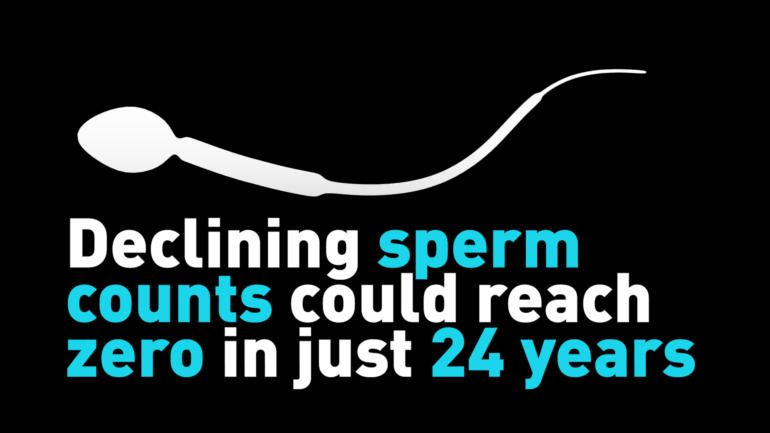The world is facing an impending fertility crisis, experts warn.
Diminishing sperm counts and physical changes in men and women due to hormone-disrupting chemicals in products are threatening human survival, writes Epidemiologist Shanna Swan.
“If you look at the curve on sperm count and project it forward — which is always risky — it reaches zero in 2045,” Swan told Axios last month.
Swan, a scientist at the Icahn School of Medicine at Mount Sinai in New York, recently published her book: “Count Down: How Our Modern World Is Threatening Sperm Counts, Altering Male and Female Reproductive Development, and Imperiling the Future of the Human Race”.
“These endocrine-disrupting chemicals (EDCs) are playing havoc with the building blocs of sexual and reproductive development,” Swan writes.
Examples include:
* Perfluoroalkyl substances (PFAS):
Man-made chemicals that repel stains and water found in pots and pans, carpets, clothing, and in fish and other animals. PFAS never disintegrate and can be found in major water supplies.
* Phthalates:
Chemicals used to make plastic harder to break. They can be found in detergent, diapers, flooring, nail polish, toys and many other products. Phthalates have been found in animal studies to cause birth defects and reproductive problems.
* Parabens:
Chemical preservatives that mimic the hormone estrogen. They can be found in shampoo, conditioner, face cleansers, moisturizers, deodorants, sunscreen, toothpaste and makeup.
These chemicals have been widely found in people’s blood and urine in the U.S., in adults and infants.
The chemicals can increase or decrease people’s normal hormone levels, mimic their natural hormones or alter their natural production of hormones, according to the U.S. National Institutes of Health.
This can result in decreased sperm concentrations, decreased sperm motility, and genital abnormalities, according to the Environmental Working Group.
Swan’s findings were first widely circulated in 2017, when she served as the senior author of a paper that examined 185 studies of nearly 43,000 healthy men in Western countries and found that total sperm count fell 59 percent between 1973-2011.
“It’s startling and chilling when you realize that the number of children you may be capable of having is slightly less than half that your grandparents could conceive,” Swan writes.
In addition to diminishing sperm count, the chemicals are also shrinking the size of human penises and testes.
Baby boys exposed to phthalates after the first trimester also had a shorter anogenital distance or AGD, which is the space between the anus and the genitals, Swan says.
Scientists have long documented the importance of anogenital distance, she said in an interview with The Intercept.
“I have a paper from 1912 that looks at AGD and showed that they were nearly 100 percent longer in males than in females,” Swan told The Intercept. “Our work has shown that chemicals… shorten the AGD in males.
Swan has also found that AGD strongly correlates with factors affecting semen and can predict low sperm counts.
Women have also been impacted by increased chemicals in the environment.
A woman in her twenties is less fertile than her grandmother was at 35, Swan wrote.
Around the world, the number of births per woman has fallen from 5 in 1960 to 2.4 in 2018, according to the World Bank.
While her findings have been published for years, few policy changes or regulations have come to pass she tells the Intercept.
That’s why she wrote the book, she said.
 CGTN America
CGTN America

